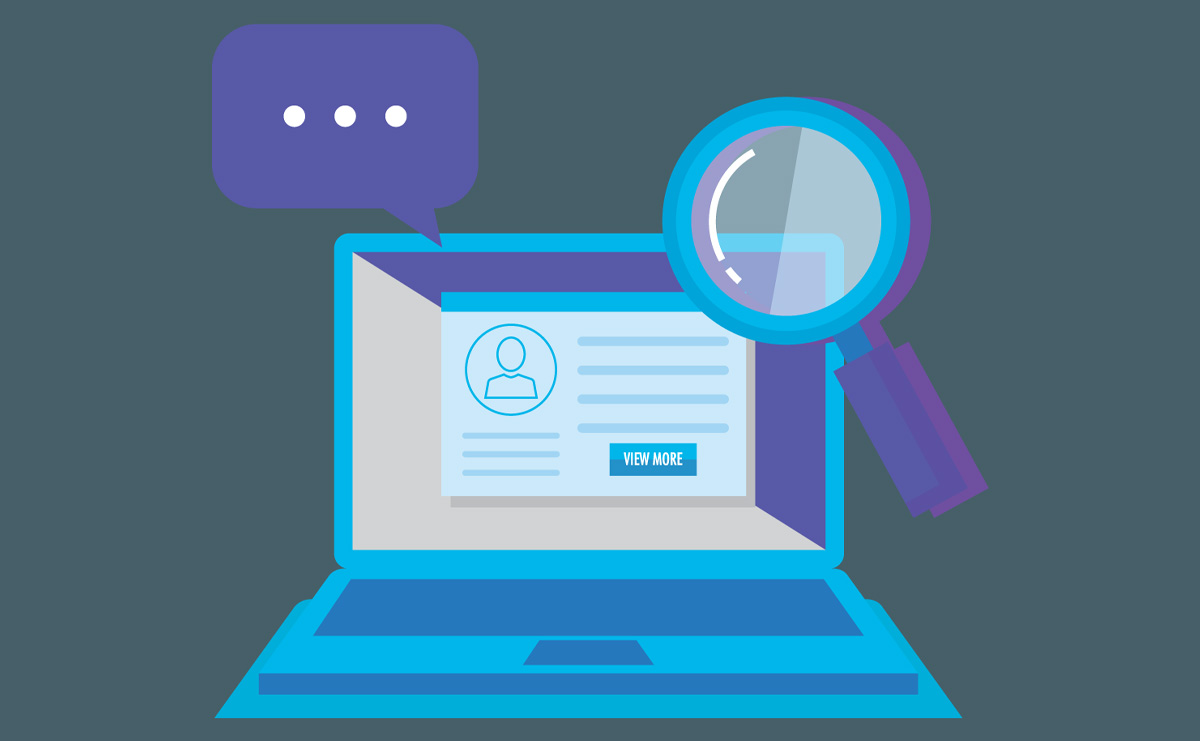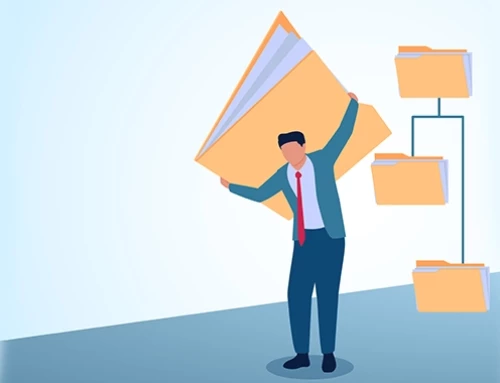Contents
Conducting E-discovery: Tips for Modern Law Firms
In today’s digital world, electronic discovery (or ediscovery) is a crucial part of the legal process. With so much information now stored electronically, law firms need to be equipped to handle digital evidence efficiently. E-discovery is all about finding, gathering, and reviewing electronic data that could be relevant in a legal case. It has become a fundamental tool for modern litigation, helping lawyers manage the vast amount of digital information available today. E-discovery law governs the procedures and requirements for identifying, collecting, and producing electronically stored information during the legal discovery process.
What is e-discovery and its Significance in Legal Cases?
E-discovery, or electronic discovery, is the process of identifying, collecting, reviewing, and producing electronically stored information (ESI) for use in legal cases. This can include emails, documents, databases, social media content, and other forms of digital data. ESI is often essential in litigation, as modern communication and business activities rely heavily on digital formats.
E-discovery is critical in ensuring comprehensive evidence collection, as it preserves and provides access to all relevant digital evidence. This is especially important for uncovering hidden or deleted information that may prove pivotal to a legal case. Courts frequently mandate the disclosure of electronically stored information (ESI) during the discovery phase, making it a legal obligation for the parties involved. Mismanaging e-discovery can lead to severe consequences, such as sanctions, fines, or even adverse rulings, including excluding key evidence.
When conducted properly, e-discovery not only enhances efficiency but also saves valuable time and resources. Legal teams can sift through vast amounts of data efficiently using advanced tools that automate processes like keyword searches, metadata analysis, and identifying privileged information. This automation saves valuable time and resources, making the process more productive. Moreover, e-discovery tools offer a clear chain of custody for all digital data, which bolsters accuracy and transparency. This ensures the evidence’s credibility and verifies that it has not been tampered with or altered.
Data security and privacy are also essential components of e-discovery. Handling large volumes of sensitive data, particularly in industries like healthcare or finance, necessitates the use of secure systems. E-discovery platforms are designed to maintain data integrity and confidentiality, which is crucial in cases involving trade secrets, intellectual property, or personal information. Furthermore, through the use of predictive coding and data analytics, legal teams can gain predictive insights that allow them to identify key issues in a case early on. These insights help attorneys devise more effective legal strategies and make informed decisions about whether to settle or continue litigation, making them feel more strategic and forward-thinking.

Types of Data Involved in E-discovery
In e-discovery, various types of data are involved, primarily consisting of electronically stored information (ESI). These include:
- Emails: One of the most common types of data, emails often contain crucial communications, attachments, and metadata like timestamps and sender/recipient information.
- Documents: This includes word processing files (e.g., Microsoft Word, Google Docs), spreadsheets (e.g., Excel), presentations (e.g., PowerPoint), and PDFs.
- Databases: Structured data stored in databases, such as customer information, financial records, or proprietary data relevant to the case.
- Social Media Content: Posts, messages, and other communications from platforms like Facebook, Twitter, LinkedIn, and others that can be pertinent in modern litigation.
- Text Messages and Chats: Communications from SMS, WhatsApp, Slack, Microsoft Teams, or other messaging apps can be critical in revealing relevant conversations.
- Metadata: Information about the data, such as file creation dates, modifications, authorship, and access details, is vital in understanding the context of the documents.
- Images and Video Files: Multimedia content like photos, videos, and graphics, which may contain relevant information in cases involving intellectual property, accidents, or incidents captured visually.
- Webpages and Website Data: Archived or live websites, including their content and structure, can be involved in disputes related to defamation, copyright, or contracts.
- Network Logs: These logs capture activities like file access, network connections, or login data that can show user behavior or access patterns.
- Cloud Data: Data stored in cloud-based systems like Google Drive, Dropbox, or OneDrive, which may include documents, backups, and shared files.
- Application Data: Data from specific software applications used by a business or individual that might be relevant to the legal matter.
These types of data can collectively form a digital footprint that is analyzed during the e-discovery process to support or dispute claims in litigation.
Key Tips for Navigate E-Discovery in Law Firms
Here are vital tips to navigate e-discovery for law firms efficiently:
Understand the E-discovery Process
The e-discovery process typically involves several stages, including:
- Identification: Determining the location and type of relevant electronic data.
- Preservation: Ensuring data remains intact and unaltered.
- Collection: Gathering the data in a defensible manner.
- Processing: Filtering and formatting data to make it usable.
- Review: Examining the data for relevance and privilege.
- Production: Providing the opposing counsel with discoverable data in the agreed-upon format. Understanding these stages will help you allocate resources effectively and ensure compliance with legal standards.
Develop a Clear E-discovery Strategy
A clear e-discovery strategy is essential for managing time, costs, and risks. Law firms should develop standardized workflows by assembling a team of legal and IT experts familiar with e-discovery tools. They should define the scope of data collection early to avoid unnecessary costs and irrelevant information and use specialized e-discovery software to automate data collection, sorting, and analysis for increased efficiency.
Use Technology-Assisted Review (TAR)
Technology-assisted review (TAR) leverages machine learning to enhance the review process, enabling law firms to analyze vast amounts of data quickly and with greater accuracy than manual review. By identifying patterns in documents, automatically classifying them as relevant, non-relevant, or privileged, and reducing human errors, TAR can significantly reduce both the time and cost associated with document review. Utilizing TAR gives law firms a competitive advantage in managing large-scale e-discovery tasks efficiently.
Focus on Data Security and Compliance
Given the sensitive nature of e-discovery data, it is crucial to maintain high levels of data security and ensure compliance with relevant regulations, such as GDPR, PIPEDA, and other data privacy laws. Best practices include encrypting data during storage and transmission, limiting access to sensitive information to authorized personnel only, and conducting regular security audits to ensure ongoing compliance with evolving data protection regulations.
Streamline Communication with Clients
Client involvement is crucial during e-discovery, particularly in data identification and preservation. Transparent communication can be ensured by setting clear expectations early on, including discussing timelines, costs, and data preservation requirements. Providing regular updates keeps clients informed about the progress and any new findings. Moreover, educating clients on the complexities of e-discovery and clarifying their roles and responsibilities helps them better understand and participate in the process.
Manage Costs Proactively
E-discovery can be costly, but proper planning can help reduce expenses. To manage costs effectively, narrow the data scope by focusing on specific keywords, timeframes, or custodians to limit the search to relevant information. Outsourcing large-scale e-discovery projects to third-party vendors with a proven track record in data security can also help. Establishing a clear budget and keeping clients informed of potential costs from the outset ensures transparency and better cost control.
Stay Up-to-Date with Legal Developments
E-discovery is rapidly evolving, with new technologies, regulations, and case law continually shaping best practices. Staying informed is essential, which can be achieved by attending e-discovery seminars, conferences, webinars, and training sessions focused on the latest trends. Monitoring case law, particularly rulings on data privacy, spoliation, and proportionality, also helps ensure compliance with evolving protocols. Networking with other legal professionals to share experiences and strategies fosters a deeper understanding of effective e-discovery practices.
Collaborate with IT Experts
Collaboration with IT professionals is essential for navigating the technical aspects of e-discovery. IT experts can assist with data extraction by identifying and extracting relevant electronically stored information (ESI) from sources like servers, databases, and mobile devices. They also play a key role in forensics, ensuring that data is preserved with integrity for admissibility in court. In addition, IT professionals provide vital troubleshooting support throughout the e-discovery process, particularly when handling complex data formats or large datasets.
Plan for Document Production
Producing documents in the correct format is a crucial step in the e-discovery process. Law firms should collaborate with opposing counsel early on to agree on the format for producing data, whether PDF, native files, or TIFF. It is also important to ensure defensibility by maintaining a detailed record of how the data was collected, processed, and reviewed. This can be critical if the process is challenged in court.
The Cost of E-discovery
Understanding the factors that influence e-discovery costs is crucial for law firms. The various stages and the vast amounts of data involved can make e-discovery a costly process. By being aware of these key factors, you can make informed decisions and effectively manage the overall cost of e-discovery.
Data Volume: The sheer volume of electronic data to be reviewed significantly affects the cost. The more data there is to collect, process, review, and produce, the higher the costs.
Data Processing: Processing involves converting electronic data into a usable format for legal review, such as indexing documents or removing duplicates. This step can be expensive, especially if the data comes in different formats or requires extensive processing.
Document Review: Document review is often the most expensive part of e-discovery. It requires a team of attorneys or legal professionals to examine the documents for relevance, privilege, and responsiveness. The larger the document set, the more hours are needed for review, driving up costs.
Technology and Software Costs: E-discovery requires specialized data collection, processing, and review software. These tools can be expensive, with pricing models often based on the amount of data processed or the number of users involved. Some firms choose to outsource this, which may add additional fees.
Expertise: If a case requires expert witnesses, forensic investigators, or data specialists to assist with complex data, this can add significantly to the overall cost.
Storage Costs: Storing large volumes of electronic data for legal review and litigation can also incur costs, especially for long-term cases where data must be preserved over extended periods.
Production Costs: After the review process, documents relevant to the case must be prepared and produced in a legally compliant format, which can also be costly depending on the complexity of the production requirements.
Challenges in E-discovery
E-discovery, or electronic discovery, presents several challenges that law firms and legal professionals must navigate. Here are some of the most common challenges and suggestions on how to overcome them:
Volume of Data
One of the most significant challenges is the sheer volume of electronically stored information (ESI). With the rise of digital communications (emails, chats, social media, etc.), there can be overwhelming data to sift through.
Data Complexity and Formats
ESI comes in many formats, from emails and spreadsheets to multimedia files and proprietary software data. The various formats make data extraction, review, and presentation more challenging.
Privacy and Security Concerns
Sensitive client data and confidential information are handled during e-discovery, which raises concerns about data breaches, leaks, and compliance with privacy laws like GDPR and PIPEDA.
Cost Management
E-discovery can become expensive, particularly if the data volume is high or the process drags out. Costs can increase with the need for outside experts, sophisticated tools, and longer review times.
Time Constraints
E-discovery is often time-consuming, especially in complex cases, which can lead to proceedings delays or missed deadlines.
Ensuring Compliance with Legal and Regulatory Requirements
Different jurisdictions and industries have data handling, retention, and discovery rules. Ensuring that all the relevant laws are followed can be difficult, particularly when dealing with cross-border or multi-jurisdictional cases.
Data Integrity and Authenticity
During e-discovery, it is essential to ensure that the data remains unaltered and its integrity is maintained so that it can be admissible in court.
Collaboration and Communication Issues
E-discovery involves multiple stakeholders, including in-house counsel, outside counsel, IT experts, and e-discovery vendors. Miscommunication between teams can lead to errors, delays, and duplicated efforts.
Managing Legacy Data
Old or obsolete data stored in outdated systems can create difficulties during e-discovery. Extracting or converting legacy data into a usable format may require additional resources and time.
Handling Metadata
Metadata (data about the data) is essential for proving the authenticity of files and understanding their history, but it can be easily altered or lost if not handled carefully.
By understanding and addressing these challenges, law firms can better manage e-discovery processes and mitigate risks associated with large volumes of digital data.
How to Use Predictive Coding and AI in E-discovery
Predictive coding and AI have transformed how e-discovery is handled today, making it faster, more accurate, and more affordable. Predictive coding uses machine learning to sift through massive amounts of electronic data, quickly sorting and prioritizing files. After a team manually reviews and labels a small sample of documents as relevant or not, the system learns from this and applies the same logic to the rest, reducing the manual workload. AI takes this a step further by constantly refining the process based on user feedback, spotting patterns and connections that even humans might overlook. This combination of tech not only saves time but also boosts accuracy in ways traditional methods cannot match.
Steps to Implement Predictive Coding in E-discovery
a. Prepare Your Data
Before using predictive coding, organize and process the data to be reviewed. This involves identifying relevant custodians, setting timeframes, and collecting all necessary data from emails, documents, databases, etc. Use tools like RunSensible, which offers robust data collection and filtering capabilities, to ensure only essential data is included in the e-discovery process.
b. Create a Seed Set
A seed set is a subset of the data that human reviewers manually analyze to help “train” the predictive coding algorithm. These documents are labeled as either relevant or irrelevant to the case. Ensure that the seed set is diverse and representative of the entire dataset. RunSensible can help you filter data by keyword, date, or type to ensure that the seed set is comprehensive.
c. Train the Algorithm
Once the seed set is reviewed, the AI model begins to recognize patterns in the data. The system will then apply these patterns to the rest of the dataset to predict which documents are relevant or irrelevant. Continuously monitor the results and provide feedback to improve the AI’s accuracy. Periodic quality checks on the system’s predictions are essential to correctly identifying relevant data.
d. Iterative Review
After training, the AI model will provide an initial set of relevant documents. Review these documents, confirm or correct the system’s decisions, and provide feedback. This iterative process helps refine the AI’s accuracy. In RunSensible, you can use batch processing to review AI-sorted documents and continuously update the model with new inputs.
e. Final Review and Production
You can finalize the review once the AI model reaches an acceptable accuracy level. Documents identified as relevant are prepared for production, while those deemed irrelevant are excluded, significantly reducing the manual review load. Keeping detailed logs of how predictive coding was used and how the results were validated ensures compliance with legal standards. RunSensible’s audit trail feature can help track every decision made during the e-discovery process.
Benefits of Using Predictive Coding and AI in E-discovery
Using predictive coding and AI in e-discovery offers several significant benefits that enhance document review. One of the primary advantages is improved efficiency. Predictive coding and AI dramatically reduce the time needed for document review by automating much of the categorization process. This automation allows legal teams to focus on high-priority tasks, streamlining workflows and reducing bottlenecks in large-scale cases.
Another major benefit is cost savings. By minimizing the manual effort required for document review, law firms can significantly cut down on labor costs. AI-powered systems can process and analyze thousands of documents quickly, making the process far more cost-effective than traditional review methods. This saves time and allows firms to allocate resources more effectively.
Predictive coding, a key component of AI in e-discovery, also contributes to increased accuracy. It helps prevent over-review by minimizing irrelevant data and prioritizing only the most relevant information. AI models, with their ability to detect patterns and connections within the data, reduce the risk of missing crucial documents and ensure more thorough analysis.
AI and predictive coding tools are instrumental in managing larger cases in e-discovery. They enable law firms to handle vast amounts of data without the need to significantly increase human resources. As the volume of data in modern litigation continues to grow, this scalability is essential for law firms looking to maintain high service standards while handling complex cases.
Conducting E-discovery Using RunSensible
E-discovery software for law firms such as RunSensible is designed to help law firms manage large volumes of data in modern litigation. Critical features in RunSensible’s platform include automated data filtering based on keywords, dates, or file types, allowing you to identify relevant information quickly. Additionally, the software offers de-duplication capabilities, which identify and remove duplicate files for a more streamlined review process, saving time and reducing clutter. RunSensible also ensures cloud compatibility, providing secure access to data from anywhere and enabling collaboration without compromising security.
Investing in the right technology, like RunSensible’s e-discovery solutions, can enhance efficiency by automating tedious tasks, reducing manual labor, and ensuring accuracy throughout the discovery process. This helps law firms stay on top of compliance, accelerates case timelines, and improves overall case management.
The platform ensures robust data protection and compliance with legal standards such as GDPR and HIPAA, offering top-notch encryption and access controls to safeguard sensitive information. It also supports reporting and data export, allowing legal teams to generate detailed reports on the e-discovery process and export documents in various formats for court submissions.
Final Thoughts
E-discovery is now a crucial part of the modern legal world. With more data stored digitally, law firms need to have efficient and secure methods for managing electronic information during litigation. The success of a case can often hinge on how well a firm can sift through and manage vast amounts of electronically stored information (ESI). By using advanced tools like AI and predictive coding, firms can simplify their e-discovery processes, cutting down on time, cost, and the chances of human error.
Data security and regulatory compliance are also key, especially as privacy laws tighten. Law firms must be proactive in adopting the right technologies, crafting strong e-discovery strategies, and working closely with IT professionals to ensure digital evidence is safely managed and presented accurately.
Platforms like RunSensible help law firms handle the complexities of e-discovery with precision, ultimately leading to better case results and increased client satisfaction. By keeping up with the latest tools and best practices, law firms can confidently manage the challenges of e-discovery in today’s fast-paced digital environment.
Disclaimer: The content provided on this blog is for informational purposes only and does not constitute legal, financial, or professional advice.







